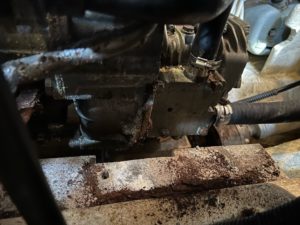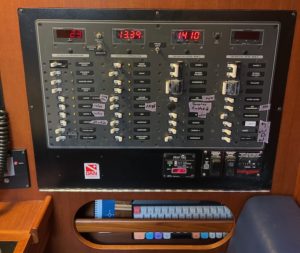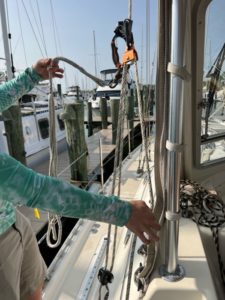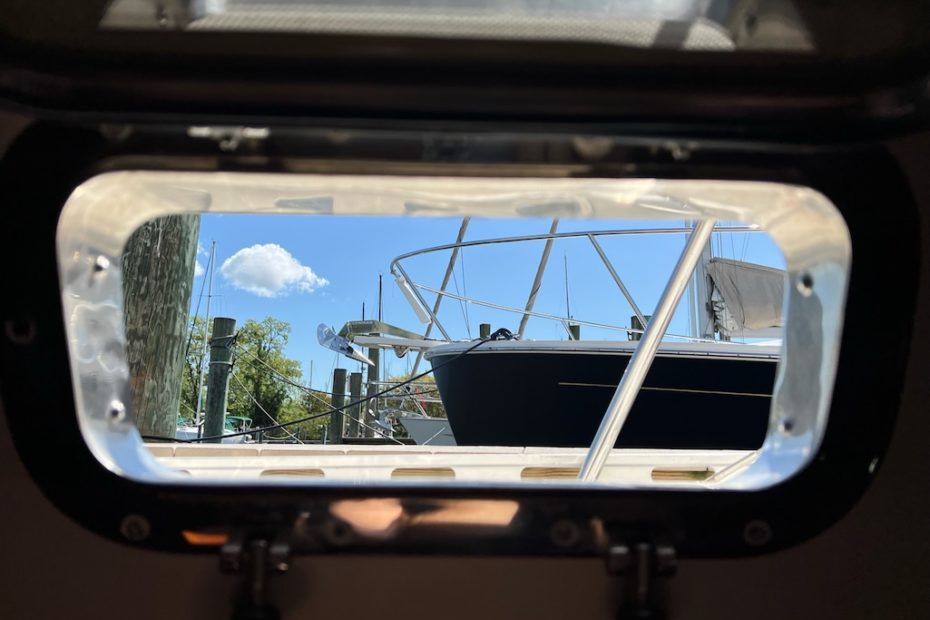DIY and boat projects are a significant part of full-time liveaboard life. DIY is a reality if we are to be self-sufficient. As we launched from the boatyard to the marina slip, we began a massive education effort to become self-sufficient and enlisted vendors to help us. Charlie and I agree that a DIY + Vendor Education approach optimizes our long-term success by giving us a solid foundation while progressing our journey.
Working with Vendors
I started working on scheduling back in February to ensure we had the significant projects lined up by May. Spring is the peak season for mid-Atlantic sailboat vendors. Everyone in the boatyard wants to get out on the water to start their season.
Why all the vendors and not more DIY? Right now, it’s a blend for us. We are new to all the sailboat systems (and Calibers have many). We also have the resources to leverage experts to help us build a baseline for DIY. For every vendor I talk to, I communicate that we need a partner to educate us. We’re not looking for someone to do the work and leave without our involvement. We also did our homework (Charlie is really good at this part) to learn enough about the systems to converse with each vendor.
Here’s who we lined up for the week:
- Diesel mechanic:
- Install motor mounts.
- Identify any apparent issues with the motor.
- Electrical consultant:
- Evaluate the charging system because we saw oddities while on the hard.
- Discuss battery replacement.
- Assess the current setup as it relates to full-time liveaboard use.
- Rigging inspection: baseline the 17-year-old standing rigging and consult on replacement.
- Our Captain: get some hours learning the boat for safety & insurance.
- Our Sailing Totem Mentors: debrief on the results of the various vendor meetings and review the revised project list.
Diesel Engine Work

While we could’ve de-winterized the engine, we scheduled a diesel mechanic to do it so we could also have them replace the rusted motor mounts. In addition to the motor mount installation, the mechanic walked Charlie through his evaluation of our motor and its current state. I mainly listened in since there’s room for only two people in/around the engine room.
The good news was nothing was leaking, though there were two spots to monitor. Once running, the motor purred like a kitten…a very loud kitten…running on internal combustion.? The bad news is the engine was pushing 16v to the batteries. Fortunately, we scheduled an electrical consultant to troubleshoot later in the week.
Electrical Consultation

I hung back on this conversation, not because I didn’t know about the system, but because it was important for Charlie to maximize the technician’s time. Because Charlie owns the electrical system, he already has more knowledge of the current state and what changes he wants to make. Thus, we optimized the consultation by reducing the fundamental questions I would ask to keep up.
That said, we gained great information from the technician. We identified:
- a bad alternator regulator
- a broken Echo charger. This charges the starter and/or forward battery using the house bank.
- an undersized forward battery intended to power the high-amperage-in-a-short-timeframe bow thruster
- breakers on the 2nd AC line of the breaker panel are DC breakers (ran out of room under the DC label, apparently)
- our DC ammeter is working again (flaky!)
- our AGM batteries might not be totally toast. We won’t know until we can do a load test unplugged from shorepower
- initial evaluation on upgrading to lithium
We gained a lot from spending 3 hours with an expert. Because they are experts, they could look at the system quickly, discuss what Charlie knew, and give us recommendations based on best practices. It was well worth $400.
Rigging Inspection

I strongly advise being very picky about who does your rigging inspection. We paid $450 for a rigging inspection during the purchasing process. Quickly, we learned that we needed a different vendor because our values were mismatched. That experience was an excellent opportunity to outline what makes a good partner in our rigging vendor, which led us to find a new partner.
Those requirements include the following:
- a quality report: this means not an email with notes, but a standardized list
- lots of high-quality, high-resolution pictures
- someone to collaborate on planning the project’s subsequent phases.
Given that experience, we partnered with a new rigger post-purchase over the winter to complete a critical project: replacing the broken Selden in-mast furler system with the new brushless model + the new electrical components that go with it. Their work was fantastic. Once we splashed, they did the official rigging inspection. Note: not all boatyards allow going up the mast while the boat is on the hard.
The inspection report had a lengthy list of items with notes on what “serviceable” or “unserviceable” meant, particularly regarding safety and usefulness. The list included everything from anything attached to the mast (lights, antennas, etc.) to everything typically considered rigging (standing & running, lifelines, etc.). The riggers were knowledgeable and willing to teach us throughout the process. Additionally, they showed me the rig for ascending the mast and gave me gear tips.
Captain and Consultants
Throughout the process, we stayed in touch with our other partners: our Captain and our mentors. This part of our team genuinely has our best interests in mind because they gain nothing from us replacing our rigging or upgrading to lithium. This unbiased opinion is critical to balance our excitement and emotional inclinations to buy new and shiny things. We leverage their expertise to review our project list, validate vendor recommendations and guide us as we embark on the full-time liveaboard cruising life.
Summary
For our journey, we have approached our transition to full-time liveaboard life by combining a DIY approach with expert vendor education to build a strong foundation. We lined up several vendors for primary systems to establish a baseline and educate us on various boat systems.
We emphasize the following:
- Importance of finding the right partners.
- Proactively communicating with those partners.
- Seeking unbiased opinions/feedback from mentors and captains.
We hope that you learn from our experiences and lessons learned from working with vendors. At a minimum, we hope you recognize the benefits of investing in expert consultations when appropriate/available.
Disclaimer: This post includes affiliate links to Amazon, which means we get a little cash if you make a purchase. No obligations.
Discover more from SV Loka
Subscribe to get the latest posts sent to your email.
